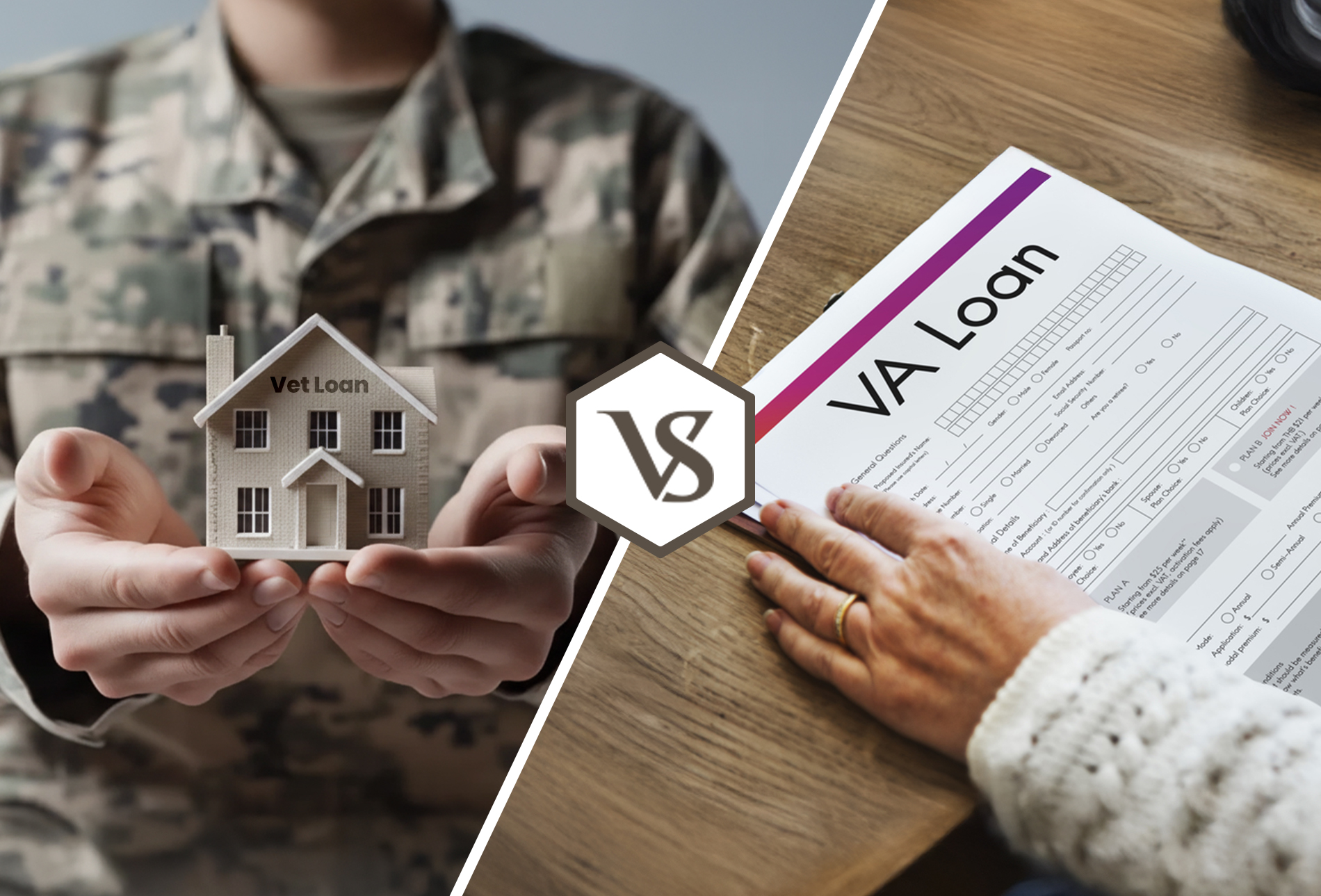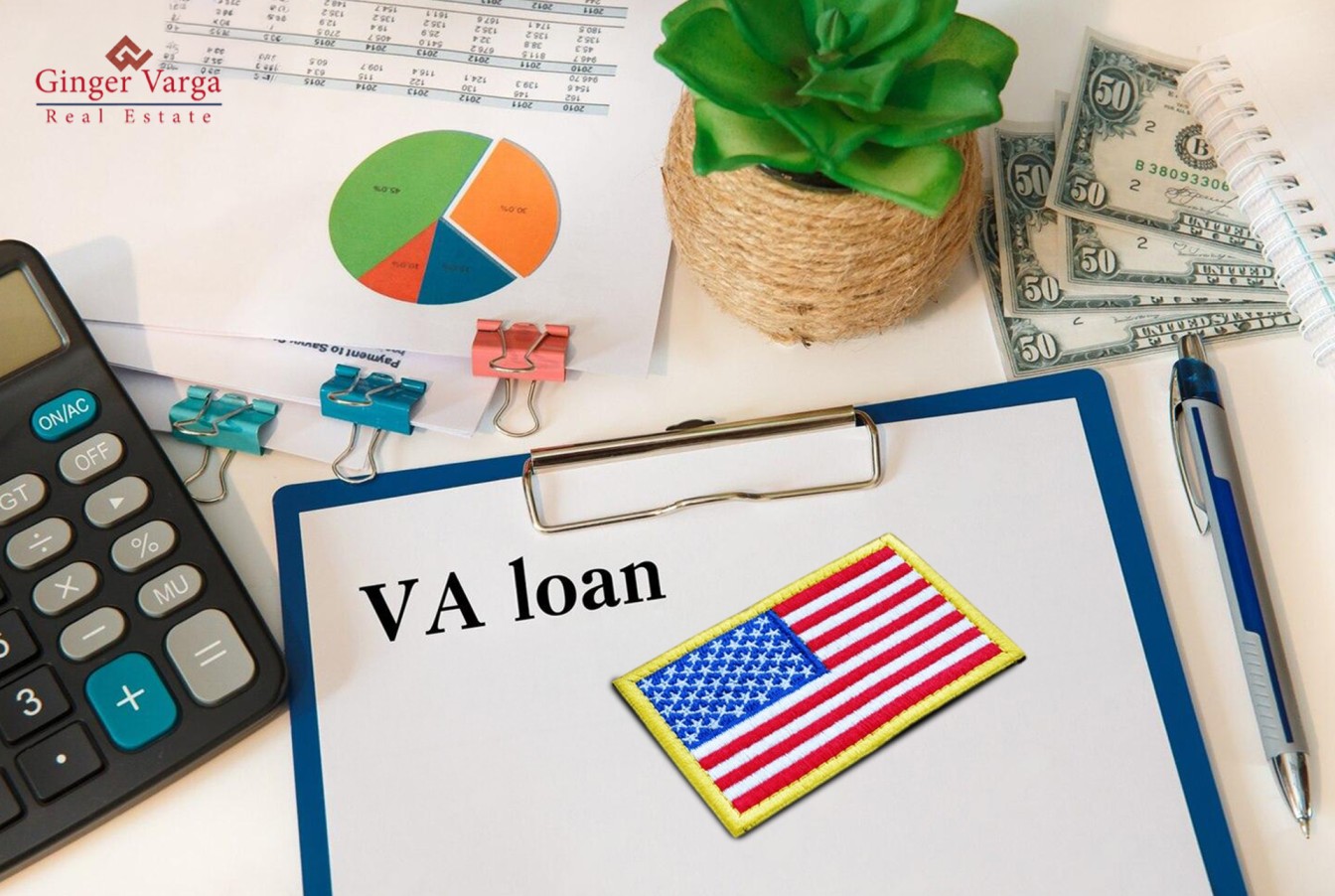
Wondering how long it takes to assume a VA loan? On average, the VA loan assumption process takes 45 to 60 days, though it can extend up to 90 days depending on lender efficiency, documentation accuracy, and VA approval timelines. Unlike a traditional mortgage, assuming a VA loan involves transferring an existing loan’s balance and interest rate — a process that requires approval from both the lender and the Department of Veterans Affairs.
Here’s what to expect:
- Application & Documentation (1–2 weeks) – Submitting financials and assumption paperwork.
- Lender Review & Credit Approval (1–2 weeks) – Verifying eligibility and financial strength.
- VA Approval & Closing (1–2 weeks) – Final confirmation and loan transfer.
In this comprehensive blog, we will explore how long it takes to assume a VA loan and the step-by-step assumption process. We will delve further into the essential requirements for a VA loan, provide critical tips to speed up the process, and discuss the common challenges faced.
Start reading!
What Is a VA Assumable Loan?
A VA loan assumption allows you to assume an existing VA loan, including its interest rate and remaining balance. It is valuable in a high-rate environment, offering buyers a reduced loan payment as compared to applying for a new loan.
Assumptions come with lower fees and fewer closing costs than a traditional purchase. There are crucial considerations for Veterans allowing their loan to be assumed by a non-Veteran.
The VA assumable home loan helps a new borrower assume payments. VA loans are government-backed loans provided by the U.S. Department of Veterans Affairs. It is available for military veterans and their spouses.
Private lenders supply the funds, but the VA backs the loan for the lenders if the borrower fails to pay. It allows VA home loan lenders to provide more favorable terms than standard mortgages.
Let us explore VA home loan benefits –
- Cost Savings: The buyers may benefit by skipping closing costs, appraisal fees, and loan insurance.
- Exclusive Interest Rates: If the initial loan features a rate lower than current market rates, it can potentially result in considerable savings over the long term.
- Accessibility for Non-Veterans: Can a non-veteran assume a VA loan? VA loans can be taken by non-veterans, broadening the range of potential buyers for the property. However, if a non-veteran assumes the home loan then the Veteran will lose their entitlement so the Veteran may not want to sell to a non-veteran.
- Recovering VA Benefits: When a veteran assumes a VA loan, the seller can recover their complete VA loan benefits only if the home is sold to another Veteran. It enables them to utilize these benefits again later.
Timeline: How Long Does It Take to Assume a VA Loan?
Getting a VA loan involves several steps that differ in length depending on different factors. It encompasses lender efficiency, documentation requirements, and government processing times.
Understanding the timeline is crucial for both buyers and sellers to set realistic expectations. You must evaluate the process by reviewing past trends, existing recommendations, and the current timeline.
Assuming a VA loan takes from 45-90 days depending on the lender and how quickly all parties respond to requests. The VA does not establish a definite timeline for assumptions. Thus, it is essential to work closely with your selected lender and a VA loan specialist for customized advice.
Updated Guidance & VA Circulars
In the past with the VA loan process, delays frequently occurred due to insufficient documentation or delays at the lender or the VA regional loan center.
With time, the Department of Veterans Affairs has released revised guidance and circulars to simplify the loan assumption procedure.
It involves eligibility criteria, streamlined documentation, and motivating lenders to embrace more efficient methods.
For example, recent VA circulars have highlighted the electronic submission of documents. It also includes establishing more apparent timelines for lenders’ responses.
These updates have minimized delays and enhanced the overall effectiveness of the assumption process.
Typical Current Timeline
Currently, taking on a VA loan is quicker than in earlier decades, due to digital processing and more defined guidelines. Most loan assumptions are finalized in 45 to 60 days, given that all necessary paperwork is submitted on time and there are no unexpected issues.
The schedule consists of:
- Initial assumption application and submission of documents (1–2 weeks)
- Lender review and credit approval (1–2 weeks)
- VA approval and finalization (1–2 weeks)
Some assumptions can be finalized more quickly if the lender has experience and the applicant is thoroughly prepared.
However, problems such as missing documents, title issues, or specific borrower situations can lead to delays in processing.
Buyers and sellers need to collaborate closely with their lender and agents and remain responsive to information requests to facilitate a smooth and timely process.
Learn More: Difference Between Texas Vet Loan and VA Loan
Step-by-Step Assumption Process
Considering a VA loan is a wise choice for buyers aiming to obtain advantageous conditions and simplify homeownership. The procedure demands thorough preparation and meticulous following of VA and lender regulations.
Let us understand how to assume a VA loan –
The step-by-step VA loan assumption process provides a straightforward and systematic method for buyers and sellers. It enables them to shift a VA loan from one individual to another.
This procedure guarantees that all criteria are fulfilled and documentation is well managed.
Here we will discuss the step-by-step process for loan assumption –
1. Confirm Loan Assumability
The initial step is to confirm that the VA loan you plan to take over qualifies for transfer. Although you must work with the Seller’s lender for the assumption, obtaining a pre-qualification from any lender is usually essential to confirm your qualification before proceeding.
After that is established, you can search for properties that fit your criteria and are advertised for assumption.
Throughout the process, you must have the documentation from the seller that clearly details the loan’s status, terms, and outstanding balance. It ensures transparency from the beginning.
2. Collect Necessary Financial Documentation
Then, gather all necessary financial documentation, such as income verification, tax filings, and credit histories. The lender will utilize this data to assess your qualification. Having a good financial profile speeds up the approval process and establishes you as a trustworthy borrower.
3. Apply with the Lender and VA
After identifying a home, you will send your application to the lender as well as the VA for evaluation. This step guarantees that every party verifies your compliance with credit, income, and VA standards.
You must prepare to respond to inquiries and submit supplementary documents quickly. Prompt and comprehensive communication is crucial to ensure the entire process remains on schedule for a swift closing.
4. Pay the Essential Funding Fee
If applicable, you must pay a VA funding fee as part of the assumption. The charge funds the VA loan program, making it more accessible for future borrowers.
Some purchasers, like disabled veterans, might be eligible for an exemption. In this case, you must verify with the lender, as they could still charge a fee.
5. Close the Deal
Generally, the assumption process lasts between 60 and 90 days. This is why it is crucial to stay on top of it to avoid any delays in your closing.
The closing timeline will rely on how fast all parties and the lender act. After receiving all approvals, the last step is to finalize the loan transfer and sign the closing documents.
Learn More: Can I Have Two VA Mortgages At The Same Time?
VA Loan Requirements & Disqualifiers
Understanding the requirements and disqualifiers for a VA loan is essential for anyone considering this unique home financing option. The VA loan program comes with specific eligibility criteria and restrictions.
When pursuing a VA loan assumption, both the buyer and the seller must meet specific eligibility and financial standards. These VA loan requirements ensure that the assumable mortgage transfer is secure and protects all parties involved.
Generally, a property financed with a VA or FHA loan can be assumed by another buyer. In many instances, traditional mortgages are not.
The VA possesses extensive assumption guidelines. Lenders and servicers managing these loans will probably have distinct criteria that potential assumers need to fulfill.
If you are looking for a VA assumable loan, you need to interact with the lender or servicer issuing the initial VA loan.
Generally, to qualify for a VA Mortgage, an active duty service member or Veteran must meet the following service requirements:
- 181 Days of Active Duty Service in Peacetime
- 91 Days of Active Duty Service During Wartime
- 6 Years of Service in Reserves or National Guard
- You are the partner of a military member who lost their life while serving.
Let us delve into the Veterans Affairs home loan requirements in detail –
- Employment and Income: The VA permits financial institutions to establish their own criteria for employment and income for the borrowers. Usually, lenders require evidence of consistent income or employment to cover your monthly loan payments.
- Credit Score: The government does not mandate that VA loan borrowers possess a minimum credit score. Lenders may have their own criteria, which could be more flexible than those applied to a traditional loan.
- Debt-to-Income Ratio (DTI): Having a significant income appears different to a lender if you have a high credit card debt. Apart from verifying your income, VA lenders assess your debt-to-income ratio (DTI). This ratio indicates the portion of your monthly gross income allocated to your debt repayments. Generally, the VA lenders demand a DTI of 41% or lower.
- Funding Fee: Although VA loans do not require down payments, they have a drawback – a funding fee. It is a single fee paid at closing by VA loan borrowers to help in covering the program’s expenses to U.S. taxpayers.
There are no costs for down payment or mortgage insurance. You can choose to pay the fee in full at closing or finance it by incorporating it into your loan. Then you must repay it gradually with your loan.
VA Loan Disqualifiers
A poor credit score is not the sole reason your VA loan application may be denied. You must be careful about the loan disqualifiers –
- Matters of qualification concerning your service record must verify the most recent VA home loan criteria. It is vital to ensure you meet the requirements.
- Acquiring additional debt after your loan has been conditionally approved increases your DTI.
- Unable to confirm your financial or job status.
- You may have issues regarding the property itself, either due to its appraised value providing inadequate collateral or because it fails to meet the VA’s property standards.
Tips to Speed up the VA Loan Assumption Process
Get your VA Certificate of Eligibility (COE)
Your loan officer will access the VA Home Loan Portal online and submit your COE application for you. In many cases, the VA will provide the COE immediately. In some cases, the loan officer will receive a notification indicating that you need to apply manually.
Your loan officer will also handle this online, but you must provide your DD-214. The VA portal will take a scanned version of that document as part of your application. The VA will handle your application and send the updated COE to your loan officer via email within a week.
Fill up the Closest Living Relative information
Fill in the information for your closest living relative. It will be included in a separate document provided by your loan officer.
- Go Over Your Credit Report: Find the section that details all the requests to your credit report from the previous 180 days. Draft a brief note for each question, detailing what it involved and stating whether you established any new credit.
- Investigate Errors: If your credit report indicates any late payments or other negative entries, you need to write a brief letter explaining each one.
After finishing and signing your loan application and disclosures, your loan officer can send your file to the underwriter for approval. This is referred to as a “TBD approval” for property To Be Decided.
Common Challenges and Pitfalls of Assuming A VA Mortgage
A VA mortgage offers distinct benefits but comes with multiple challenges and potential drawbacks. Both buyers and sellers need to recognize these for better understanding. From strict eligibility criteria to potential financial risks and delays in paperwork, these challenges can complicate the process.
The common challenges of military home loans:
- Potential Delays in VA Loan Assumption: Some of the challenges include incomplete application forms, issues related to VA loans on the buyer’s end, and additional legal matters that exceed expectations. The period needed to secure a VA loan may extend if problems occur during the approval process.
- Incomplete Applications: Insufficient assumption applications is one of the primary reasons for delays. Assume that the applicant must supply sufficient documents. These include income verification, credit reports, or identification. In that case, the lender can only move forward after they provide the documents.
- Issues with VA Loan Eligibility: The assumption of a VA loan varies; the purchasers are required to fulfill specific criteria set by the Department of Veterans Affairs. Such criteria entail suitable credit and sufficient, consistent income to cover the mortgage payments needed. This could impact the purchasing process while a customer attempts to solve the issue or lead to rejection.
- Unforeseen Legal Complications: Legal issues may also create obstacles in the process. Concerns could involve the property’s title, indicating there may be hidden problems. These issues can be related to the title deeds or the fact that the property’s boundaries are not standard.
How Does a VA Loan Assumption Affect Buyers?
Assuming a VA loan only pays for the outstanding mortgage balance, not the entire sales price. You must compensate for the seller’s equity in the property. Depending on the duration of the seller’s ownership or the changes in the home’s value, it could represent a considerable sum of money.
If you cannot pay that amount in cash, you will require secondary financing to cover the expenses (if that is allowed, many times it is not so you must consult with the lender). It will affect the debt-to-income ratio necessary to qualify for taking over the VA loan.
VA loan assumptions can only be used for a primary residence, not for an investment property.
How VA Loan Assumptions Affect Sellers?
Buyers are not the only ones required to evaluate the advantages and disadvantages of VA loan assumptions.
Besides being up to date on mortgage payments at the time of the transaction, the sellers must evaluate various vital factors.
When another veteran takes over your VA loan, you must request that they replace their entitlement with yours on the mortgage. It will ensure the complete restoration of entitlement.
Alternatively, the entitlement you utilized to purchase the house will not be accessible to you until the loan has been fully settled. This implies you cannot obtain a VA loan with no down payment, and your entitlement may be insufficient to secure a loan entirely.
If a non-veteran takes over your VA loan, the seller loses the remaining VA entitlement. The seller could be responsible for attorney or real estate brokerage fees. It is due to the VA regulations safeguarding buyers from bearing those costs.
Secure Your VA Loan, Home, and Future with Ginger Varga
The time required to secure a VA loan can vary, depending on several key factors. These include lender performance, document preparedness, and the intricacy of the deal.
It is crucial to understand the detailed procedure to contribute to a smoother and quicker loan assumption process. It involves organizing all necessary paperwork beforehand and keeping open lines of communication for everyone.
Being aware of obstacles and adhering to expert advice helps you easily handle the VA loan assumption process.
Ginger Varga is a Realtor who understands the VA loan and assumption process and has 20+ years of experience supporting veterans and their families with purchasing homes. Once pre-qualified, she will work closely with buyers and their lender to find the ideal property, making sure it fits well within their budget and lifestyle. She specializes in helping Veterans navigate through the entire buying process with the VA loan or assumption and handles negotiations seamlessly for a smooth transition.
If you want to learn more about VA assumable home loans, reach out to Ginger Varga. Ginger combines expert knowledge and experience with a friendly, tailored approach, supporting you at every stage.
How Long Does it Take to Assume a VA Loan: FAQ
How long does it take to assume a VA loan?
A VA loan assumption generally requires 30 to 60 days to finalize. This duration may change based on the lender and the intricacy of the procedure. To speed up the process, promptly provide the lender with all necessary information.
Can a non-veteran assume a VA mortgage?
A non-veteran can assume a VA mortgage if they satisfy the financial criteria set by the lender. It includes a strong credit score and adequate income. Anyone can take the VA loan, not just veterans. However, the lender will assess the financial situation to confirm whether they can handle the loan obligations.
What is the VA funding fee for loan assumptions?
The VA funding fee for assuming a loan is generally 0.5% of the loan value. It is regarded as a distinct loan category with a reduced cost. This charge goes to the U.S. Department of Veterans Affairs to fund the VA loan program. It may differ depending on factors such as the loan type and down payment amount.
Do I need a VA certificate of eligibility to assume a loan?
Yes. If you are the seller and possess a VA loan, you must supply your Certificate of Eligibility (COE) to the lender. It will help to verify your veteran status and to transfer your entitlement when allowing another party to take over the loan. The buyer taking over the loan must also satisfy the lender’s financial requirements.
How does entitlement substitution work?
Entitlement substitution is a mechanism in the VA loan framework that permits a qualified Veteran to assume another Veteran’s VA loan. It is applicable while utilizing their own entitlement to finance the property. This substitutes the new Veteran’s entitlement with the original Veteran’s entitlement, thus reinstating the original entitlement for them to utilize their VA loan benefit for a future residence.
What are common reasons for delays?
Common reasons contributing to delays in VA loan assumption consist of –
- Incomplete or missing documentation
- Delayed interactions among the parties concerned (including buyers, sellers, and lenders)
- Extended approval durations from the lender or the Department of Veterans Affairs.
Other elements that can lead to delays include outstanding credit concerns, title complications, or failure to meet eligibility criteria. Make sure that all documents are correct and submitted on time, and avoid these delays.




